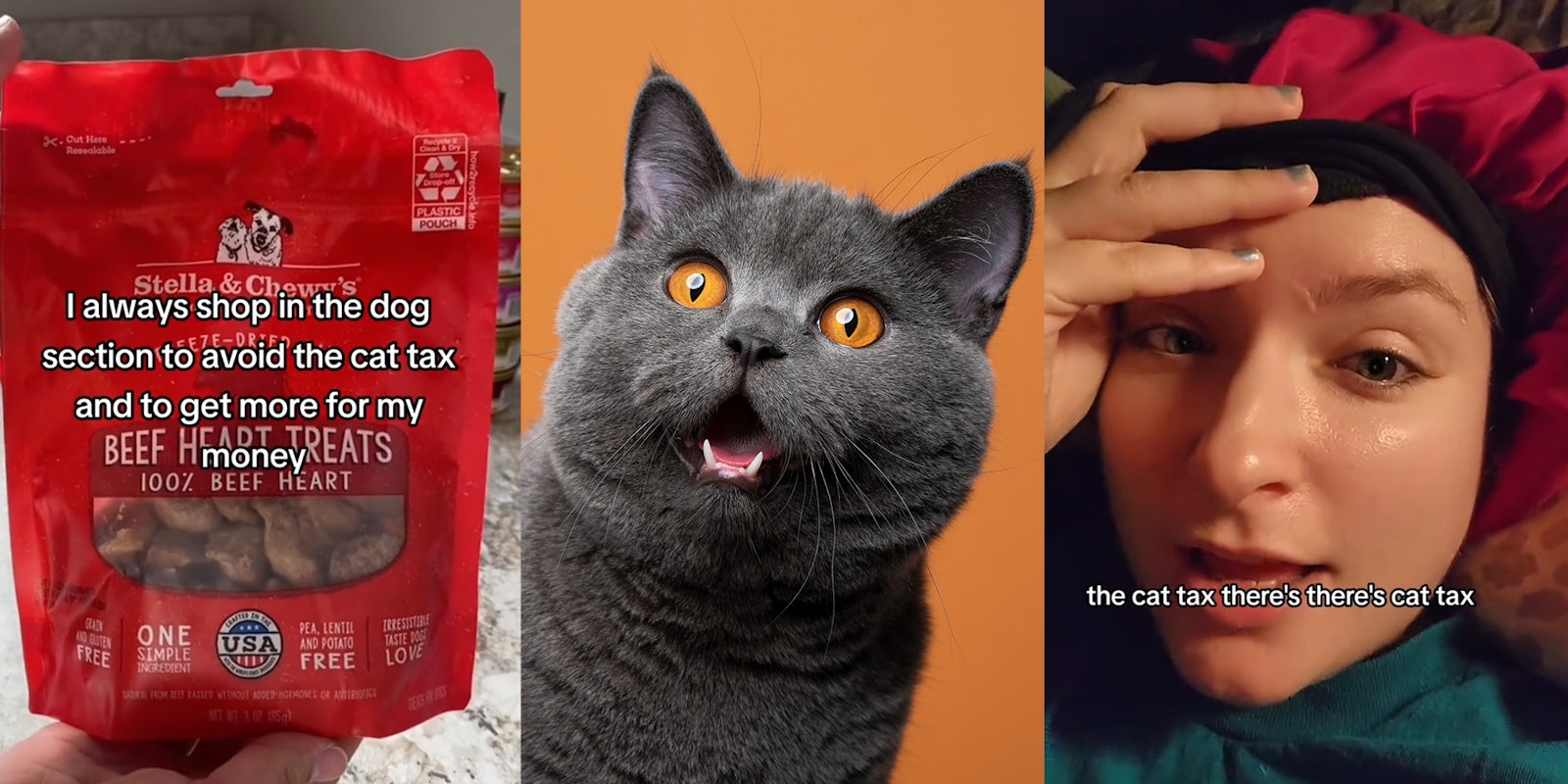Since the 1990s, there’s been increased discussion around what many call a “pink tax.” Per Investopedia, the pink tax is “a markup on goods and services marketed to women and for which men pay less for similar products and services.”
The pink tax is so common that numerous internet users have documented instances of it in local stores. For example, one user noted that women’s deodorant was $2 more expensive than men’s. Another showed the differences between boys’ and girls’ clothes at Target—the girls’ clothes were consistently shorter, thinner, and more expensive.
Now, a user on TikTok has called out a “cat tax”—and viewers are wondering if the cat and pink tax are connected.
Stitching with a video from TikTok user Karly (@eye.karly), TikTok user KL lays out the theory for a clip that currently has over 315,000 views as of Saturday.
@thistlebegreat #stitch with @karly & the kitties Not surprised. #pinktax #patriarchyproblems ♬ original sound – KL
The original video shows Karly buying dog treats from for her cat to avoid the “cat tax.” KL reacts with surprise.
“The what? There’s a cat tax?” she asks. “Is it because throughout history, women and cats have been linked, and so the cat tax is just an extension of the pink tax?”
While this theory is possible, it’s not necessarily supported by data. Men and women own cats at approximately equal rates, so higher prices on cat products are likely to affect the sexes at around the same level. One study also says that dog owners earn more money than cat owners, and in general, dog owners spend more on their pet than cat owners. How the market responds to these interests is a matter of debate, but there’s little evidence to state that this disparity is gendered.
So, why are cat products more expensive than dog products? It depends on what product is being referred to here, as cat toys can be cheaper than dog toys. Cat food, however, tends to be more expensive than dog food, which experts chalk up to the expense of the high protein and fat content required in the food.
That said, for one-ingredient treats like the one shown in Karly’s video, it is possible that there is some version of a “cat tax” being applied.
On KL’s TikTok, users supported this theory, with some offering specific examples that they’ve seen of a “cat tax.”
“Definitely a cat tax on lots of products! BUT just be sure to double check ingredients as there are a few treats/food that you need to watch/avoid,” a user wrote.
“I think there is a cat tax because dogs sometimes need bigger sizes of dog food. Dog toys. And treats. And the businesses want to tap into that money,” suggested another.
“This is why I pay $3 a can for cat food but the same brand of dog food is a bigger can and half the price???” a third user wondered.
“Oh 100%, work at a pet store, if someones getting a 1 ingredient treat, I ALWAYS send them to dog treats,” alleged an additional TikToker. “Same d*mn thing!!”
The Daily Dot reached out to Karly via Instagram direct message and KL via TikTok comment.


